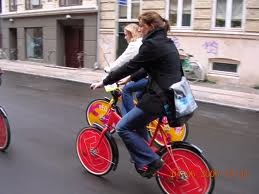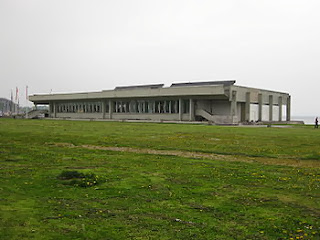Denmark is a peninsula with a cluster of islands with most of them
connected by bridges to each other and the peninsula. My relatives live on
Lolland, the fourth largest island in the southern portion of Denmark and
across the channel from Germany. Lolland is about a 1.5 hour drive from
Copenhagen and a 45 minute ferry ride to Germany. Lolland is also known as the "pancake island" because of its
flatness: the highest peak of the entire island is 25 m (82 ft) high. Lolland
used to flood but now there is a dike around the island to prevent the
flooding. The largest town of Lolland is Nakskov, with
15,500 residents. Other main towns are Maribo (6,000 residents), which hosts
the seat of the Diocese of Lolland and Sakskobing (3,500 residents), and Rodby
(2,500 residents). My relatives live mostly in and around Holeby which is a few
miles from Maribo. My Grandfather was born in a small town, Herritslev.
Lolland’s economy is mostly farming with the main crop being sugar
beets. There is also a huge sugar producing factory in Nykobing-Falster. At one
time, before the bridges, Lolland had a ship building yard in Nakskov but that
has long been closed. In its place is a factory that builds the huge power
producing windmills you can see all over Europe.
What to see in Lolland:
Lolland is a very
rural area and with that it is very laid back and beautiful. It is un-crowded but
there is also a lot to do and see. You can see the many sites, including
castles and estates, go to the beautiful beaches or fish on the channel between
Lolland and Falster. I went fishing and was glad I didn’t catch anything. The
fish were very ugly with big sharp teeth. My cousin wanted to catch some for
dinner. I’m glad we ended up with beef.
Visiting Nysted is like
going back in time. Nysted is a small city with a beautiful port on the southeastern
side of the island. The town
and harbor originated during the Middle Ages near Aalholm Castle. The town was
a natural crossroads for commerce and traffic on account of its having the only
natural harbor on the south coast of Lolland. At the
port there is a memorial to an American bomber crew that was shot down during
World War II. The propeller is part of the memorial with the names of all the
service men on the plane. The people of Nysted found the bodies of the crew and
returned their dog tags to their families.

Nakskov is in the inner part of the Western inlet of Lolland, which remains one of
the agriculturally richest of the Danish islands. The area was settled during
the Neolithic period and from this period the area has been continuously
inhabited. The town received trade privileges in 1266, during the reign of king
Eric 5 of Denmark. Once the export center of the rich farmland region of
western Lolland, Nakskov thrived on trade, commerce and industry. Nakskov was
once known for ship building but now is known for manufacturing wind mills that
produce power. Go to the coast and enjoy the beautiful scenery. There is also
an old Russian submarine you can tour. A couple guys wrote a letter to the
Russian government asking if they had any old submarines they could have. Surprisingly
the Russians said if you can get it back to Denmark you can have it. They towed
it back and started tours.
![]()

Maribo is the
county seat of Lolland. The church in Maribo is worth visiting. Knuthenborg Safari Park is just outside
of the city and is a must see. You can drive your car all over the park and
view the animals at your own pace.

I would go to Sakskobing
just to see the water tower. There is also a nice shopping area downtown.
Rodby is a port
city on the south of Lolland facing Germany on the other side of the straight.
This is where you can catch the ferry both on foot and by car to Puttgarden,
Germany. I have used the ferry many times to get to my relatives in Holeby when
traveling from Germany. Take the relaxing ride to Puttgarden and from there you
can catch a taxi to the city of Berg for shopping, eating and drinking.
Lollandia is a
resort west of Rodby on the coast. At Lollandia you can rent rooms and cabins.
There is an 18 hole golf course and a very nice beach. Also, you will find an
indoor water park and a bowling alley.



































